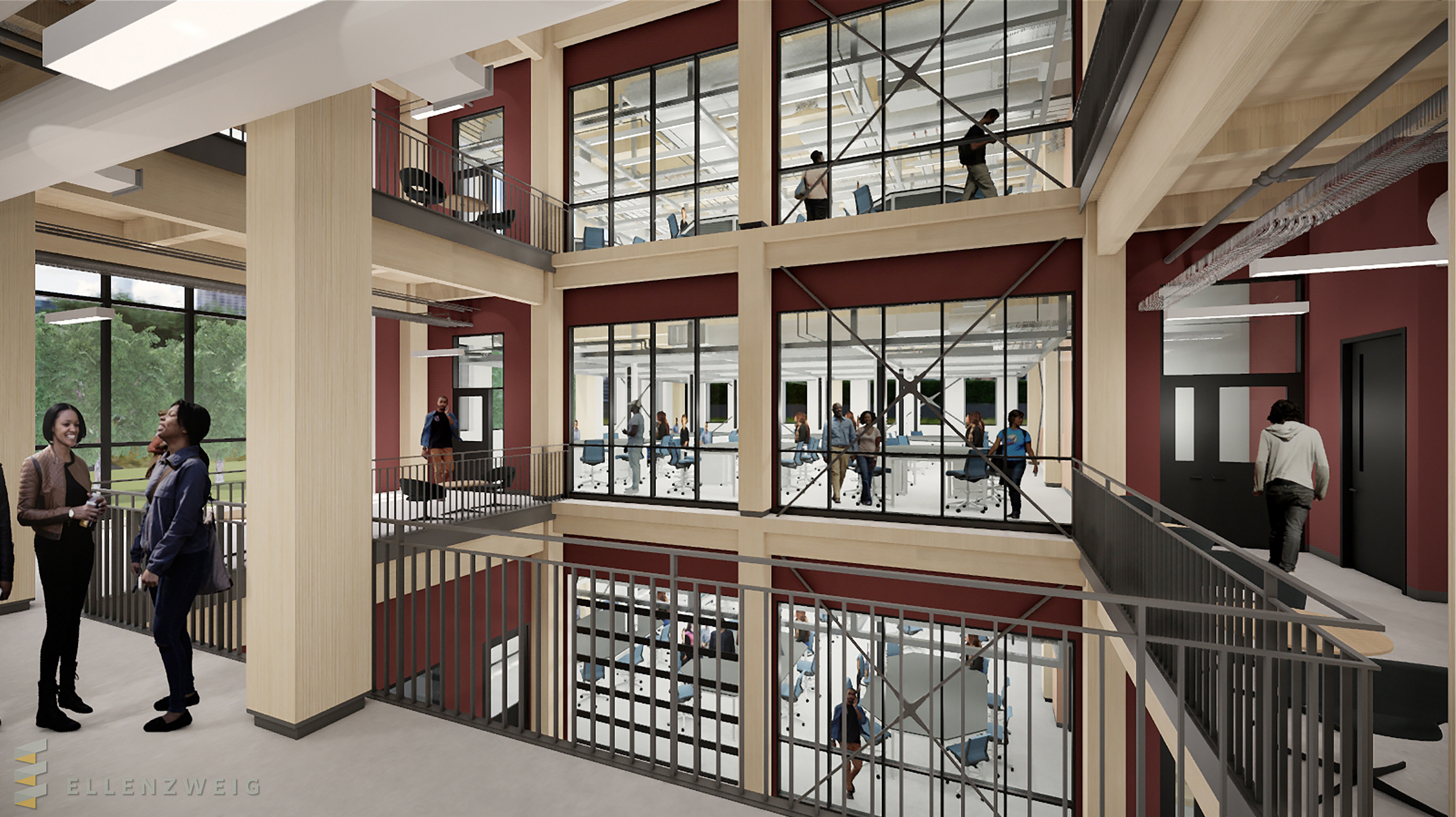
Michigan State University’s future STEM Teaching and Learning Facility will be the first in Michigan to use wood, rather than concrete and steel, for its load-bearing structure.
Known as mass timber, this framing style uses large solid or engineered wood. The $100 million facility will be constructed of glue laminated wooden columns and a relatively new product called cross laminated timber (CLT) for the floors and ceilings.
“As a leading public research university, MSU has the fantastic opportunity to showcase these innovative and sustainable construction methods in the state of Michigan,” said Satish Udpa, MSU acting president who also serves as executive vice president for administrative services. “I am delighted to see university operations, including building construction, pull from our state’s history as a lumber leader and mesh with the engineering capabilities of advanced materials.”
“Growing trees sustainably, using all of the harvested wood and incorporating it into a long-term structure extends the carbon and climate benefits of forests." Rich Kobe, MSU Department of Forestry Chairperson
The new building will be constructed around the former Shaw Lane Power Plant, adjacent to Spartan Stadium. The renovation will include a student science studio space and a vibrant commons area with cafe. Two new mass timber wings will offer 117,000 square feet of modern teaching labs, responding to STEM course demand, which has increased 40 percent in the last 10 years at MSU.
CLT is a wood panel made from gluing layers of solid wood at cross-grain to result in a lightweight and strong panel. It’s been used in Europe for more than 20 years, with recent skyrocketing interest in Canada and the U.S., especially on the West Coast.
Michigan potential
Currently there is no CLT manufacturing in Michigan, although it’s a prime place for future development.
In addition to economic development, the building will have environmental benefits, especially for locking up carbon that otherwise would be in the atmosphere and contributing to climate change.
“By weight, carbon makes up half of wood,” said Rich Kobe, a forest ecologist and chairperson of MSU’s Department of Forestry.
“Growing trees sustainably, using all of the harvested wood and incorporating it into a long-term structure extends the carbon and climate benefits of forests," Kobe explained. "And those re-growing forests take up more carbon and provide important wildlife habitat and clean water.”
Conservation industry support
In fact, many conservation organizations, including the Nature Conservancy in Michigan, the Michigan Department of Natural Resources (DNR) and the Michigan Forest Biomaterials Institute (MIFBI), are actively promoting mass timber construction.
“Michigan is ideally situated to become a leader in mass timber manufacturing. We have abundant forest resources that are managed sustainably and the manufacturing know-how,” said Mark Rudnicki, executive director of MIFBI.
Many believe the MSU building will catalyze additional mass timber construction in the state, which might lead to establishing CLT manufacturing in Michigan.
“Mass timber construction provides a new market for sustainably produced timber which encourages forest landowners to keep their woodlands healthy and growing. And forests are the world’s most cost effective carbon capture tool,” stated Helen Taylor, director of the Nature Conservancy in Michigan.
Michigan DNR officials agree.
“Having a CLT manufacturer in Michigan would not only create green jobs using sustainable resources, but also provide the financial resources and incentives that are needed to restore and conserve healthy, diverse, and productive forests that provide so many other benefits,” said Debbie Begalle, state forester and chief of the forest resources division of the Michigan DNR.

Benefits of CLT
In addition to the strength and sustainability of CLT, another benefit is the speed of construction. Panels can be assembled quickly.
“We compared mass timber with other framing methods and were intrigued by how far wood has come as a building material,” said John LeFevre, director of MSU’s Planning, Design, and Construction office.
The pleasing aesthetics of exposed wood also creates a warm, inviting, and atypical environment for learning science. The new STEM building is slated to open in fall 2020 with classes beginning in January 2021. The wood panels are being manufactured in Quebec and will arrive on campus in May.
“I am excited to see the educational, research, and outreach opportunities that the building itself promises to many academic units and to our land grant mission,” said Ron Hendrick, dean of MSU’s College of Agriculture and Natural Resources. “It is an interdisciplinary platform encompassing forestry, construction management, biosystems engineering and beyond, and can serve as a catalyst to develop this new technology in Michigan.”
The project architect is IDS with Ellenzweig Architecture, IDEO Design and Sasaki Design. Granger Construction Co. is the construction manager.



 Print
Print Email
Email



